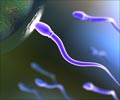Researchers have found a possible treatment for infertility in females who cannot produce eggs by using artificial eggs developed in the laboratory.
Highlights
- Scientists have produced artificial mice eggs in the laboratory from the body cells of mice
- Some of the eggs that were fertilized through IVF and implanted in surrogate female mice developed into healthy pups
- The research provides the possibility of a breakthrough in the treatment for infertility in women who cannot produce eggs
The fertilized egg undergoes complex changes as it changes into a fetus and later a baby. Such changes that are guided by nature are obviously difficult to replicate in an artificial setting, and involve ethical issues.
Researchers developed mature eggs from the cells of mice obtained from the tip of their tails. They introduced some genetic changes that converted these body cells into stem cells.
Stem cells are undifferentiated cells which grow into other types of cells. The stem cells were then encased in stem cells obtained from the developing ovary or testis and grown in the laboratory into eggs. The size and organization of genetic material in these laboratory-produced eggs were similar to that of normally-produced eggs.
The eggs were then fertilized and implanted into the uterus of surrogate female mice. Some of the eggs developed into apparently normal mice.
Beside its potential as an infertility treatment, this technique has the potential of preventing genetic diseases that run in families. One researcher has also suggested that it has the potential of producing babies from two male gay parents, without the need of a female egg.
- The success rate of the study was very low. Only 11 of the 316 embryos i.e. 3.5% of the embryos that were implanted developed into fully developed babies.
- The placenta also showed unusual growth.
- There would definitely be some ethical issues involved since it involves producing life in the laboratory.
References:
- Hikabe O et al. Reconstitution in vitro of the entire cycle of the mouse female germ line. Nature 2016 doi:10.1038/nature20104









